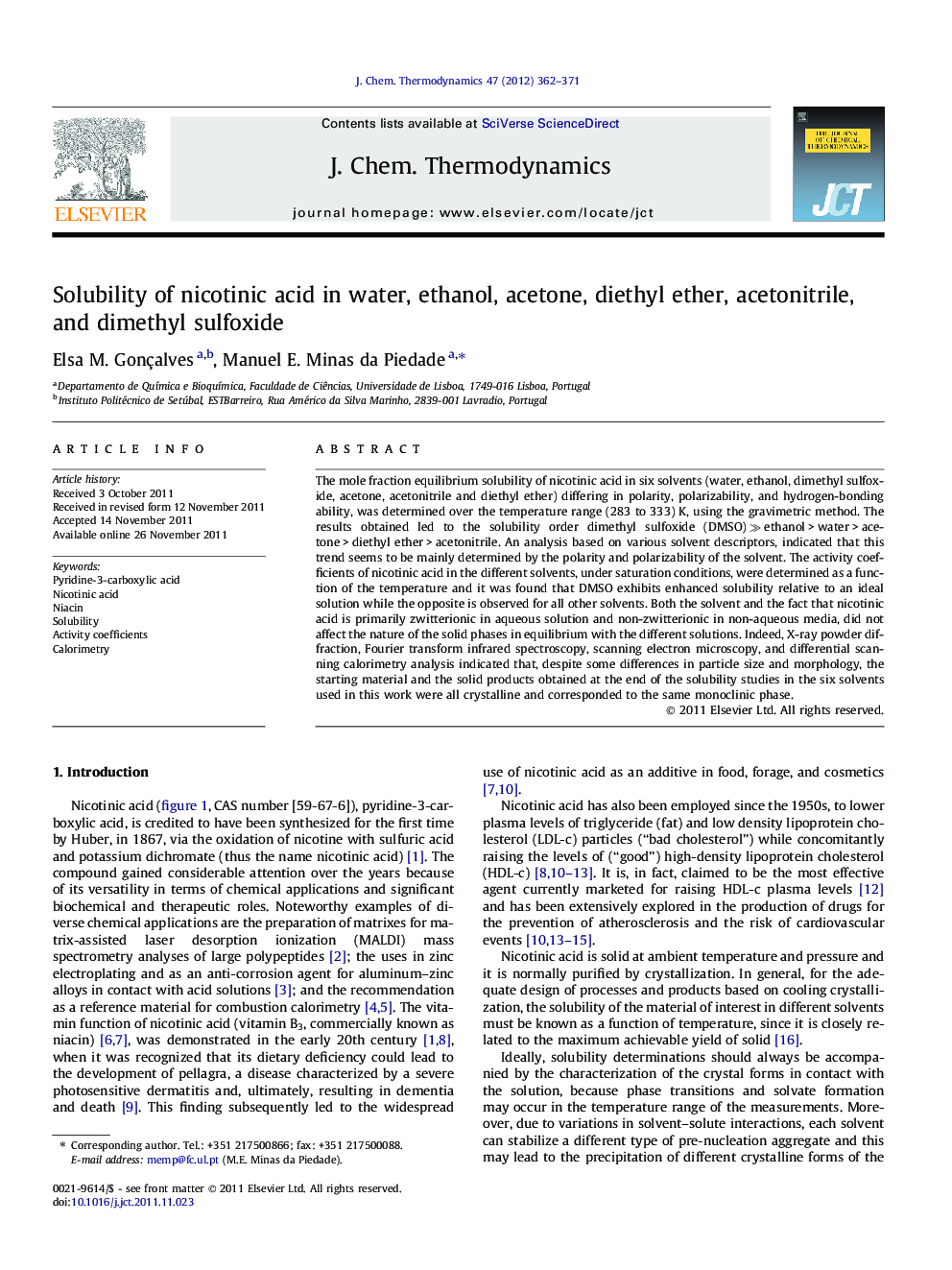| Article ID | Journal | Published Year | Pages | File Type |
|---|---|---|---|---|
| 216217 | The Journal of Chemical Thermodynamics | 2012 | 10 Pages |
The mole fraction equilibrium solubility of nicotinic acid in six solvents (water, ethanol, dimethyl sulfoxide, acetone, acetonitrile and diethyl ether) differing in polarity, polarizability, and hydrogen-bonding ability, was determined over the temperature range (283 to 333) K, using the gravimetric method. The results obtained led to the solubility order dimethyl sulfoxide (DMSO) ≫ ethanol > water > acetone > diethyl ether > acetonitrile. An analysis based on various solvent descriptors, indicated that this trend seems to be mainly determined by the polarity and polarizability of the solvent. The activity coefficients of nicotinic acid in the different solvents, under saturation conditions, were determined as a function of the temperature and it was found that DMSO exhibits enhanced solubility relative to an ideal solution while the opposite is observed for all other solvents. Both the solvent and the fact that nicotinic acid is primarily zwitterionic in aqueous solution and non-zwitterionic in non-aqueous media, did not affect the nature of the solid phases in equilibrium with the different solutions. Indeed, X-ray powder diffraction, Fourier transform infrared spectroscopy, scanning electron microscopy, and differential scanning calorimetry analysis indicated that, despite some differences in particle size and morphology, the starting material and the solid products obtained at the end of the solubility studies in the six solvents used in this work were all crystalline and corresponded to the same monoclinic phase.
Graphical abstractFigure optionsDownload full-size imageDownload as PowerPoint slideHighlights► We determined the solubility of nicotinic acid in six solvents by the gravimetric method. ► We found that, regardless of the solvent, the same monoclinic solid phase was in equilibrium with the solution. ► We determined the activity coefficients of nicotinic acid in the six solvents. ► We found that the solubility trends seem to be determined by the polarity and polarizability of the solvent.
